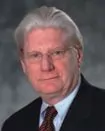On June 14, 2019, in a 3-1 decision, the National Labor Relations Board (NLRB) reversed long-standing precedent regarding union access rights to “public spaces” of employers. The decision in UPMC, 368 NLRB No. 2, grants employers greater rights to limit union activity on their property and holds that employers may bar nonemployee union representatives/organizers from soliciting employees or promoting union membership in public areas within an employer’s facility.
Under then extant NLRB precedent, where an employer had invited the public to enter or use space on its private property, the employer could not lawfully exclude union organizers from entering and using that same public space because that exclusion was considered to be unlawful interference in violation of Section 8(a)(1) of the National Labor Relations Act (NLRA). The NLRB’s decision in UPMC rejects this generalized “public space” exception and held that employers do not have to allow nonemployee union representatives/organizers access to the public areas of their property to engage in promotional or organizational activity unless the union has no other reasonable means of communicating with employees or the employer discriminates against the union by permitting access to other nonemployee groups.
The decision returns the NLRB to the standard outlined in NLRB v. Babcock & Wilcox Co., 351 U.S. 105 (1956), which only provided for two exceptions to an employer’s ability to restrict nonemployee union access to an employer’s property. In Babcock & Wilcox, the Supreme Court of the United States stated that, although an employer could not restrict employees’ right to discuss self-organization among themselves, “no such obligation is owed nonemployee organizers.” The Supreme Court outlined two narrow exceptions to that general rule: inaccessibility (when a union has no other reasonable means of communicating its message to employees, the employer’s property interest yields to the employees’ Section 7 rights); and discrimination (preventing an employer from prohibiting nonemployee union access, but allowing other third parties to distribute literature or access employees in public spaces).
In 1982, the NLRB created a third exception that found an employer violated the NLRA if it prevented a nonemployee union organizer from patronizing the “public space” as a general member of the public. Ameron Automotive, 265 NLRB 511. The NLRB in UPMC overruled this decision and its progeny, stating that Ameron Automotive:
[E]liminated altogether the applicability of Babcock’s general rule limiting nonemployee union access to private property and found discrimination based solely on the fact that nonemployee union organizers were excluded, without regard to whether the employer permitted any other nonemployees to engage in the same solicitation or promotional activities engaged in by the union organizers in the public cafeteria area.
As a result, the UPMC decision returned the NLRB to the Babcock & Wilcox exceptions that permit an employer to prohibit nonemployee access to public spaces at its facility so long as the restriction does not result in employee inaccessibility to the union and/or is not applied in a discriminatory fashion.
Applied to the facts in UPMC, the NLRB found that the employer acted lawfully by removing two union representatives from its public cafeteria for discussing union organizing with employees. The removal was held to be lawful because there was no evidence that the employer knowingly permitted other solicitation or promotional activity inside the cafeteria. Rather, the employer presented evidence that it had removed other nonemployees for engaging in promotional activity in the cafeteria, including removing a spiritual group that was distributing literature and an individual who was soliciting money. In both cases, the employer informed them that they were not permitted to solicit on the property and they were escorted from the facility.
Furthermore, the NLRB rejected the General Counsel’s position that the NLRB should consider nonemployee union representatives in the cafeteria consistently with other nonemployee cafeteria patrons. Instead, the NLRB identified a difference between admitting friends or relatives of employees versus outside entities engaging in promotional activities, such as seeking money or memberships. Therefore, the hospital employer’s policy of allowing employees, patients, and friends and relatives of patients to use the cafeteria did not create a discriminatory application when nonemployee union members sought access to solicit.
Following UPMC, an employer’s exclusion of union representatives from public areas on its private property will not be deemed unlawful unless that exclusion is accompanied by evidence that the union has no other reasonable channel of communication to the employees and absent further proof that the employer has permitted similar conduct by other nonemployee groups. Absent such proof, the employer’s exclusion of a union’s representatives from its public areas does not constitute unlawful interference with employee rights to engage in organizing activities. As a result, the mere denial of a union’s access to such public spaces is no longer legally sufficient to establish a violation of the NLRA.
What This Means for Employers
Employers can and should promulgate facially neutral rules and engage in practices regulating conduct in the public spaces on their private property, including rules prohibiting solicitation and/or distribution by third parties. Employers should consider educating their managers and supervisors on this new rule, as they likely will be the first line of defense in spotting and removing union organizers.
For employers with areas open to the public, the consistent enforcement of a solicitation/distribution policy is critical. Employers should consider documenting requests from outside groups, as well as maintain written documentation of incidents in which nonemployees have been requested to leave the employer's premises for solicitation. If challenged, this may help an employer establish that its policy was not discriminatorily applied against union activities.
Disclaimer: This Alert has been prepared and published for informational purposes only and is not offered, nor should be construed, as legal advice. For more information, please see the firm's full disclaimer.

